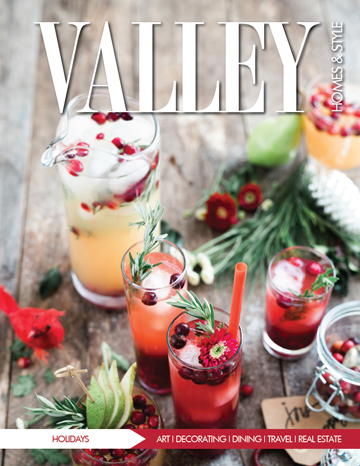by Lisa Bartell of Wisteria Manor
I’d like to invite you back to Christmas past – so close your eyes, relax, and think about the holidays when you were a child. There you are, right now, smiling in your footie pajamas. Now breathe in that wonderful aroma from the kitchen:
the exotic scent of ginger, cloves and cinnamon. Doesn’t it make your mouth water and your taste buds dance, giving you the sensation that all is right with the world? I am talking about the heavenly goodness of gingerbread!
Gingerbread came to America via Swiss monks who settled in Indiana. Since then, it has been a Christmas staple. We have not only made delicious cookies and cakes for the holidays, but we have also made decorations such as tree ornament cookies, garlands and beautiful gingerbread house centerpieces.
We are so crazy about the stuff that we even have scented candles, room sprays and potpourri mimicking its scent. The world has known its deliciousness for centuries; a gingerbread recipe dating to the B.C. era was found in Greece. China started developing its recipes in the 10th century and by the late middle ages Europeans had their own version of the recipe. In fact, in early Europe gingerbread was so coveted it was not baked at home, but in baking guilds that were sanctioned by the government to perfect and bake the prized concoction.
One noted guild in Nuremberg, Germany, was highly touted for decorating its gingerbread (Lebkuchen) with gold paint. It was such high quality that it was even used for currency for paying taxes.
In the 16th century, Grimm’s fairytale story of “Hansel and Gretel” made gingerbread houses very popular since the main characters come upon a house made entirely of sweets in the forest. Gingerbread house building has become a highly prized competition around the world. At the White House every year, a phenomenal house is built by the president’s personal pastry chef depicting that year’s Christmas theme.
Gingerbread men have been around for centuries, but Queen Elizabeth popularized them when she had them made and decorated in the likeness of some dignitaries she was having as dinner guests. What a unique gift!
Some English maidens believed if they ate a gingerbread man, it would bring them good luck in finding a husband. In Yugoslavia, gingerbread people were inscribed with love sentiments and were exchanged as romantic tokens. They were also used on religious holidays, embossed with a particular Saint, and then dusted with powdered sugar to bring out the image in the cookie.
George Washington’s mother, Mary Ball Washington, served her recipe for gingerbread to the Marquis de Lafayette. This recipe was passed down through generations of Washingtons and known as “Gingerbread Lafayette.”
In 1875 an American children’s magazine “St. Nicholas,” published a now-classic story of a runaway gingerbread man. In the story, a farmer’s wife baked a batch of gingerbread cookies, and when she opened the oven door one of them ran off. No one could catch him until a sly fox “out-foxed” him and then ate him.
Today the tradition of gingerbread lives on in many fashions and is still much adored during the holiday season. Here are a few recipes that I hope you and your family will enjoy and perhaps continue the tradition.


